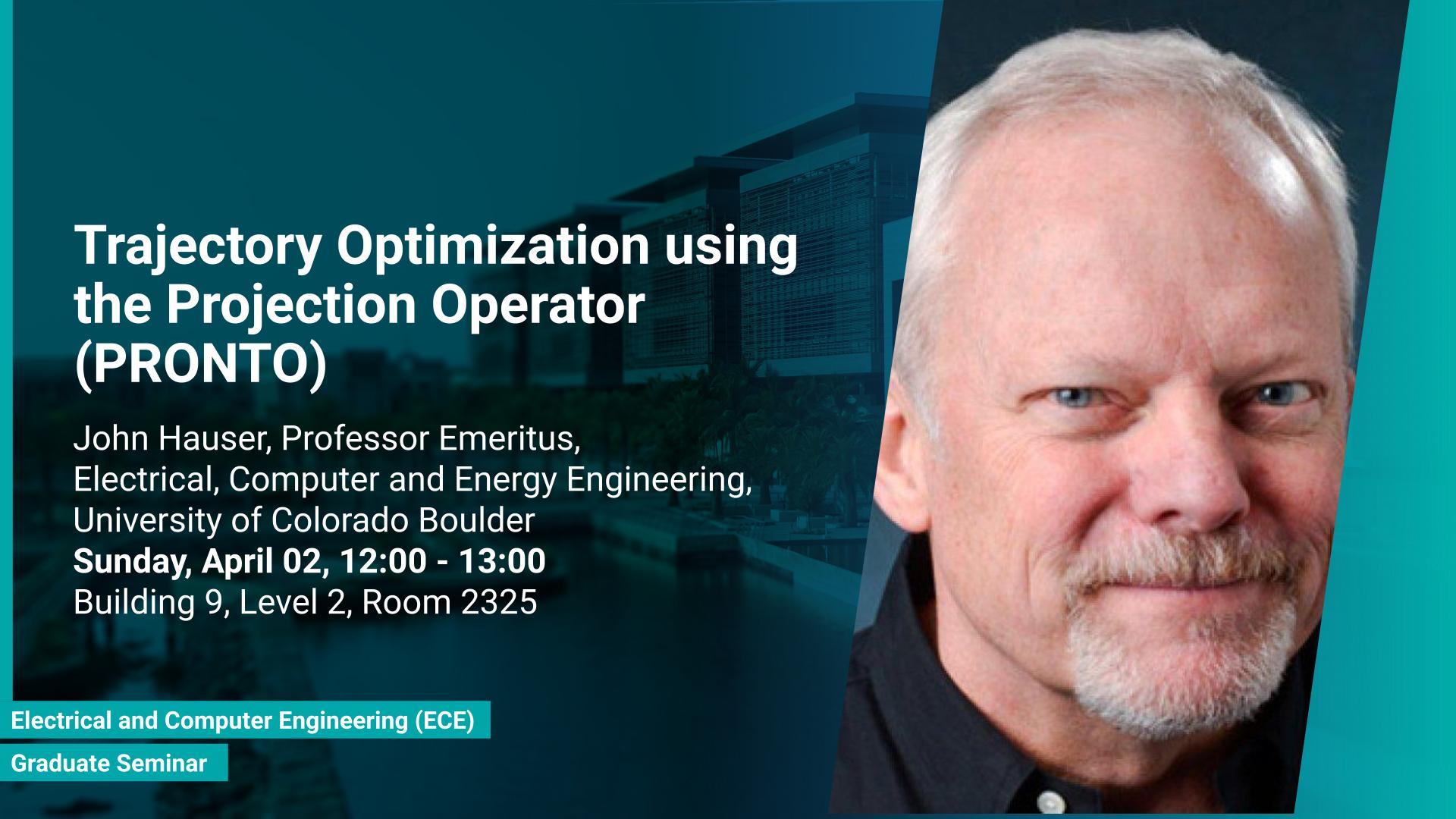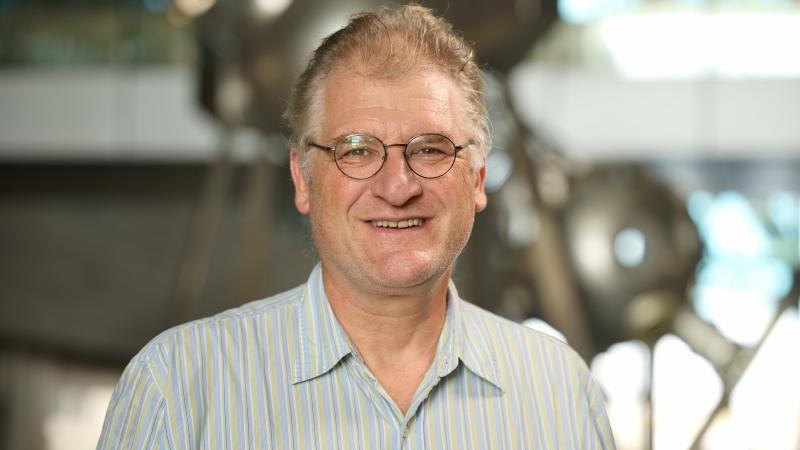Abstract
John Hauser
University of Colorado Boulder
We study the use of a nonlinear projection operator in the development of a novel function space approach for the optimization of trajectory functionals. Given a bounded state-control trajectory of a nonlinear system, one may make use of a simple (e.g., linear time-varying) trajectory tracking control law to explore the set of nearby bounded state-control trajectories. Such a trajectory tracking control system defines a nonlinear projection operator that maps a set of bounded curves onto a set of nearby bounded trajectories.
We use the projection operator approach to develop a Newton descent method for the optimization of dynamically constrained functionals. By projecting a neighboring set of state-control curves onto the trajectory manifold and then evaluating the cost functional, the constraint imposed by the nonlinear system dynamics is subsumed into an unconstrained trajectory functional. Attacking this equivalent optimization problem in an essentially unconstrained manner, we obtain an algorithm defined in function space that produces a descending sequence in the Banach manifold of bounded trajectories. The specific computations for this algorithm are implemented by solving ordinary differential equations.
Of special interest is the trajectory representation theorem: trajectories near a given trajectory can be represented uniquely as the projection of the sum of that trajectory and a tangent trajectory, providing a local chart for the trajectory manifold. The composition of the cost functional with this mapping is thereby a mapping from the Banach space of tangent trajectories into the real numbers and it is this local mapping that may or may not possess (local) convexity properties. When the second Frechet derivative of this mapping is positive definite (in an appropriate sense), the mapping is locally convex which is useful for many applications including the existence of a Newton descent direction, second order sufficient condition (SSC) for optimality, quadratic convergence, and continuous dependence of optimal trajectories on initial conditions.
We have used the PRojection Operator based Newton method for Trajectory Optimization (PRONTO) to explore the dynamic behavior of many interesting nonlinear systems, including racing motorcycles and cars, satellites, reduced G drones, marine robotics, and others. The projection operator provides a key tool for discovering interesting properties of dynamic control systems.
Brief Biography
John Hauser received BS degrees from the United States Air Force Academy and MS and PhD degrees from the University of California at Berkeley, all in Electrical Engineering and Computer Science. From 1980 to 1984, he flew Air Force jets throughout the United States and Canada participating in active Air Defense exercises. In 1989, he joined the Department of EE-Systems at the University of Southern California as the Fred O’Green Assistant Professor of Engineering. Since 1992, he has been at the University of Colorado at Boulder in the Department of Electrical, Computer, and Energy Engineering. He has held visiting positions at University of Padova, Caltech, Instituto Superior Tecnico in Lisbon, Lund Institute of Technology, and Ecole Superieure d’Electricite. He received the Presidential Young Investigator award from the National Science Foundation in 1991.
John Hauser’s research interests include nonlinear dynamics and control, optimization and optimal control, aggressive maneuvering for high performance motorcycles and aircraft and other vehicles, and dynamic visualization. Recent work has focused on the development of optimization (and optimal control) tools and techniques for trajectory exploration with an eye toward characterizing the trajectory space (with limitations) of highly maneuverable nonlinear systems. This work finds application in the control of highly configurable UAVs (with propulsion vectoring) and in the analysis of racing motorcycles.

